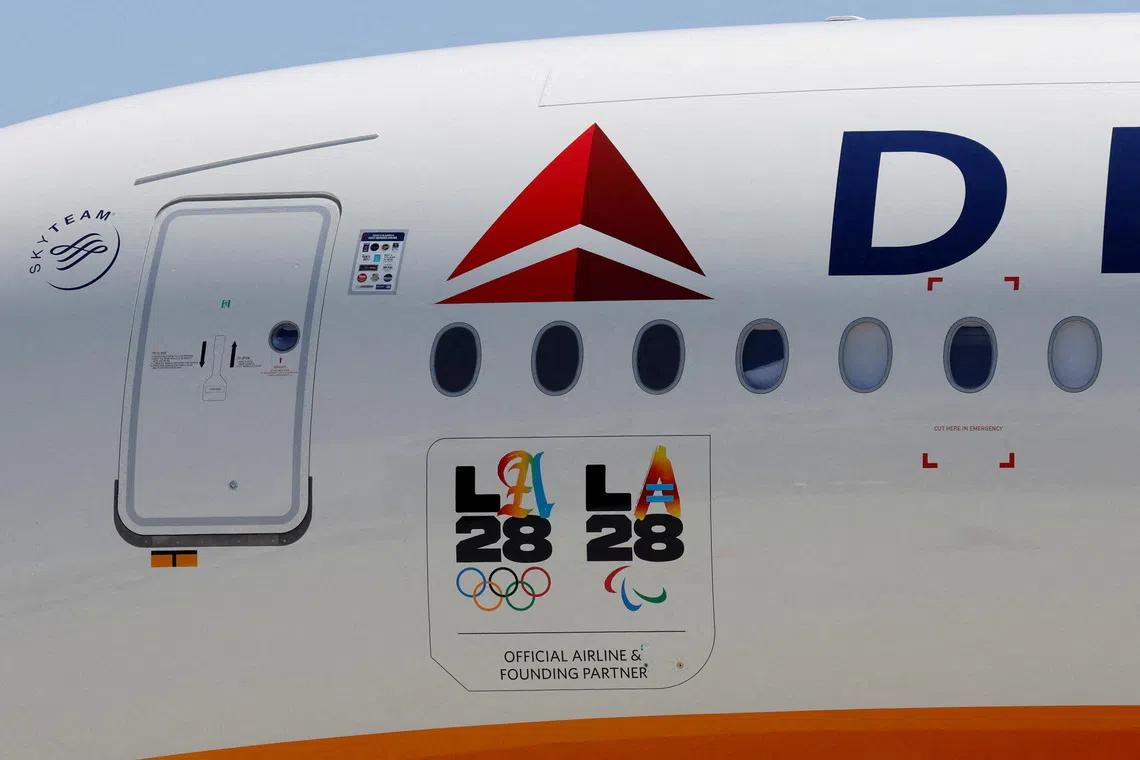From Paris to LA, flag football targets Olympics and beyond
Sign up now: Get ST's newsletters delivered to your inbox

LA28 logos are seen on a Delta Airlines jet carrying American athletes and officials and the Olympic flag as it arrives in Los Angeles.
PHOTO: REUTERS
Follow topic:
PARIS – Flag football, the fast-paced, no-contact cousin of American football, will showcase Europe’s best teams when they meet on the outskirts of Paris in September, as the sport enjoys rapid growth ahead of its Olympic debut at the 2028 Los Angeles Games.
The European Championship, from Sept 25-27 in Val-de-Marne, marks the return of a continental flag football event to France for the first time in over two decades.
“It was a challenge to come to Paris, especially right after our (2024) Olympics, so I’m very happy about that,” International Federation of American Football (Ifaf) president Pierre Trochet said on Sept 19.
“Europe has the largest number of federations... I hope this will be a highlight machine.”
Broadcasters, including BeIN Sports and Sport en France, will cover the event, part of a drive to bring the game to wider audiences.
Flag football’s inclusion at LA28 has transformed its growth prospects, Trochet added, spurring investment and drawing attention from fans and sponsors alike.
“The momentum is steady and always moving forward. Since I was elected five years ago, every year we break new barriers,” he said.
“China announced a plan for one million new players per year, the Pacific region is integrating flag into schools, Latin America is growing, and in the US we’ve seen nearly 60 per cent growth among women.
“The Olympic Games accelerate everything – sponsors, broadcast, presentation. Our ambition already looks beyond 2028.”
The game’s appeal lies partly in its simplicity. Players wear belts with flags that opponents must snatch instead of tackling, making it safer and more accessible than full-contact football.
“Flag is accessible – you only need a ball and belts. You don’t need helmets, big fields or goalposts, so it can be played almost anywhere,” Trochet explained.
He also rejected suggestions that Ifaf relies too heavily on the National Football League, which has promoted the sport aggressively in schools and international markets.
“Yes, the NFL is very involved, but there is no dependency,” he insisted. “We are a federation with 74 member countries worldwide.
“Whether kids discover flag with an NFL ball or an Ifaf ball doesn’t matter – what matters is that they play and eventually join clubs, federations and national teams.”
At the end of the day, Trochet believes that flag football is tailor-made for modern audiences.
“It’s fast and content-friendly,” he said. “In 2x20 minutes you can tell the story of a championship.
“We use storytelling, athlete profiles and clips for social media. Our 2022 World Games final in Birmingham drew about five million viewers. We’re not just thinking about LA28... We’re building for what comes after.” REUTERS

